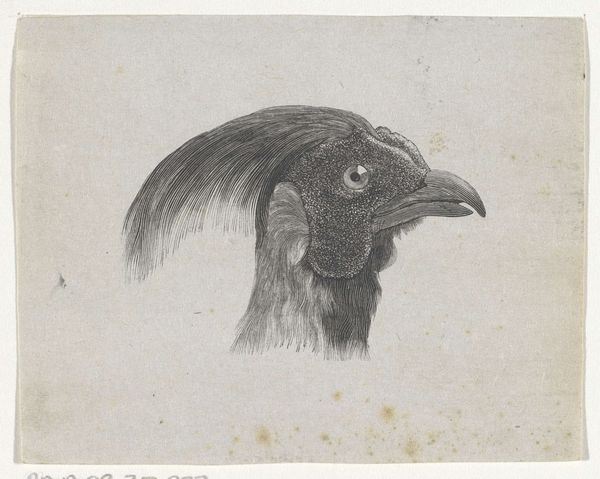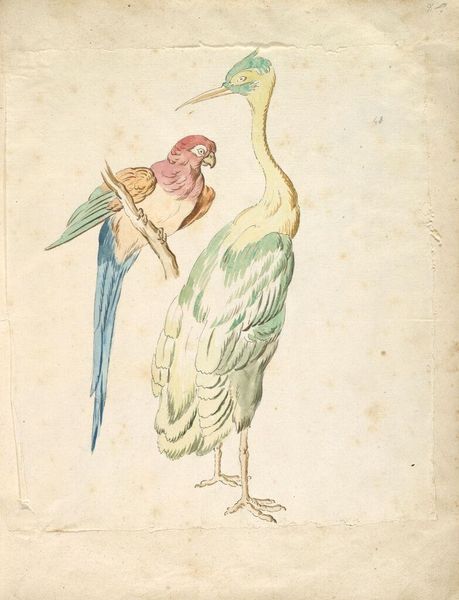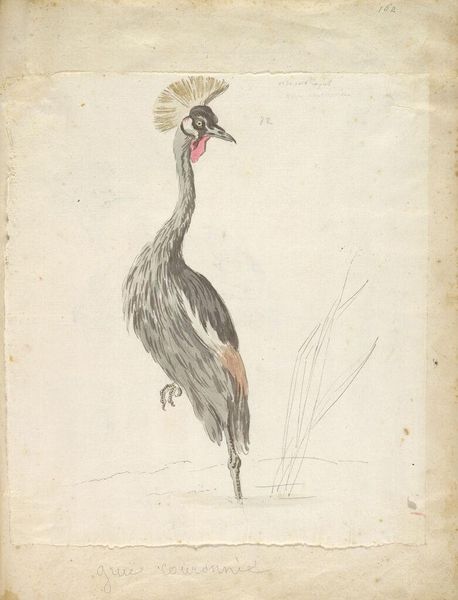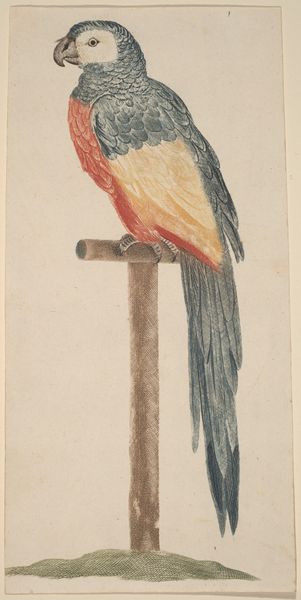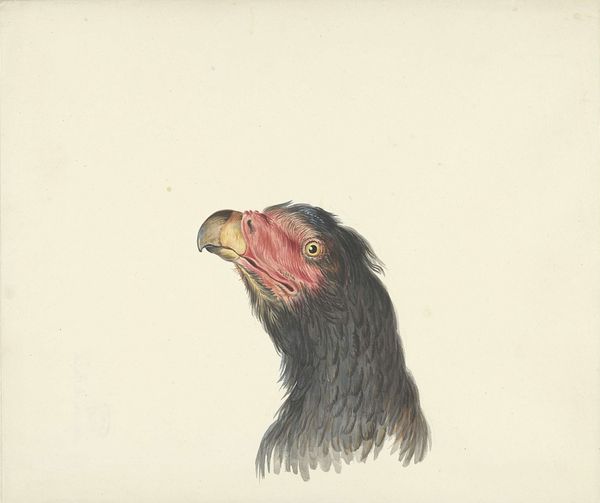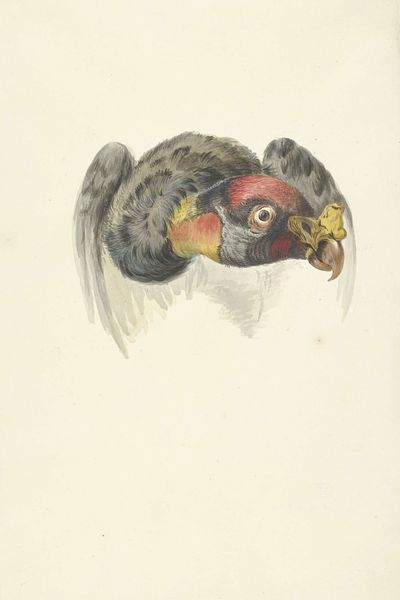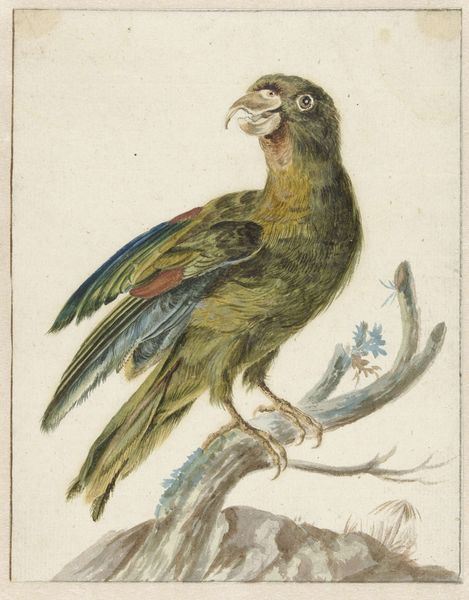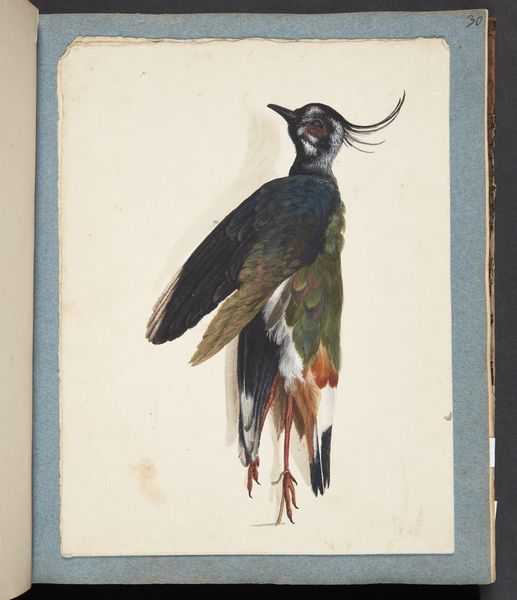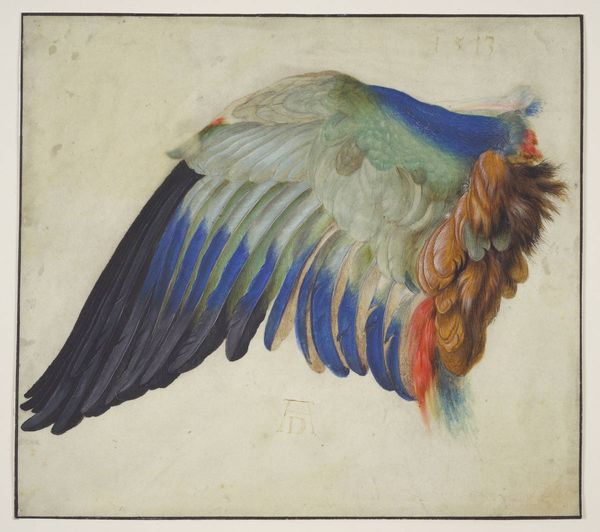
drawing, watercolor
#
portrait
#
drawing
#
watercolor
#
coloured pencil
Dimensions: height 236 mm, width 186 mm
Copyright: Rijks Museum: Open Domain
Curator: Here we have "Head of a Cassowary," a drawing created sometime between 1700 and 1800. It is currently held at the Rijksmuseum. Editor: My immediate impression is one of quiet dignity. The cool blues and greys create a serene mood, despite the subject being a rather formidable-looking bird. Curator: Yes, this coloured pencil, pen and watercolour piece manages to capture both the exotic nature of the Cassowary and, as you said, an almost melancholic poise. Consider that the bird itself is native to New Guinea and parts of Australia. This drawing offers us a glimpse into the European fascination with the natural world during that era. Editor: Right, these types of images were produced during a period of intense colonial expansion. I’m interested in how it served to exoticize non-European species and landscapes. It’s also curious to consider the role that science played in reinforcing existing power structures, contributing to a racial hierarchy where everything, even the natural world, was classified according to European values. Curator: It’s undeniable that colonial narratives colored interpretations. But let’s also acknowledge the dedication of the artist. Capturing the texture of the feathers, the specific structure of the casque... it represents the artist’s desire to record and understand the world’s biodiversity. These depictions could inform scientific progress. Editor: That scientific ambition often intersected with exploiting those same regions for resources. Art like this could romanticize colonial endeavors, hiding their destructive impact behind a facade of objective observation. Curator: While such pieces indeed were connected to systems of oppression, it does not negate the significance of its symbols: its unique structure, for example, can function as a motif representing human relationship with nature. There is beauty here and its complex origins add more layers. Editor: It's a crucial point. As we unpack layers of colonial history, we can recognize the artwork as more than a simple image, it serves as a historical artifact that shows us cultural attitudes during the Age of Exploration. Curator: And also the Cassowary’s inherent dignity, still resonating across the centuries. Editor: An interesting point, providing, as you say, another layer to the understanding.
Comments
No comments
Be the first to comment and join the conversation on the ultimate creative platform.

